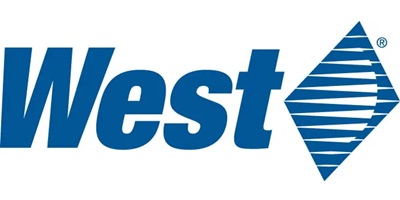In the last decade, Cell and Gene therapies (CGTs) have emerged as a popular treatment option for complex diseases. Some of the factors contributing to this rapid growth include technological advancements in manufacturing techniques, vector design, and delivery systems that are enhancing the efficacy and safety of cell and gene therapies.
It is projected that the global market for next-generation CGTs will reach US$59 billion by 2026[1]. This is likely to be further accelerated by factors such as advances in viral and non-viral gene delivery methods, greater patient access, and expedited regulatory pathways. With the advent of these advanced therapies, biopharma industry is facing many challenges not only in developing molecules against new hard-to-target conditions but also in the logistics of scaled up manufacturing.
The importance of packaging
Biopharmaceuticals, unlike small-molecule drugs, are highly sensitive to packaging interactions. Factors such as material composition, form factor design, and manufacturing quality of the containment can significantly impact the safety and efficacy of these therapies.
The cryopreservation process, essential for maintaining cell viability and potency in cell therapy, also introduces risks during freeze-thaw cycles. Cryopreservation utilizes extreme low temperatures to slow down molecular kinetics and biological activities, thereby stabilizing the cells and biomaterials for long periods of storage. Throughout the supply chain – from end of freezing and storage to the shipping and thawing – proper containment is critical for maintaining cold chain stability and ensuring the stability of the cryopreserved material.
Regulatory frameworks for cell therapy are also becoming increasingly stringent. Selecting appropriate, market-proven packaging solutions can expedite development timelines and reduce the risk of regulatory delays. Given the substantial resources invested in the development of cell therapies, any containment-related failure can result in significant losses.
To succeed in the rapidly growing cell therapy market, developers and packaging manufacturers must put in extra thought to understand and prioritize the technical considerations of packaging.
Considerations of effective packaging
Due to the unique properties and requirements for CGTs, the quality of the containment system needs to be critically evaluated from various factors.
-
Particulates
Visible and subvisible particulates could contaminate drugs, causing conditions like capillary occlusion and thrombosis. For CGTs, inherent particles may occur as a result of protein degradation, self-association, and the aggregation of viral particles. Additionally, intrinsic particles may originate from the interaction between the primary container, closure system, and the drug formulation itself.
Such interactions may result in degradative reactions or the formation of nucleation sites for ice crystallization. The formation of particulates is frequently catalyzed by the packaging, which can impact the efficacy, potency, appearance, color, and clarity of the CGTs it contains.
During the cryopreservation process, containers are also subject to special temperature conditions. Moreover, mechanical stresses during the handling, transport or freeze-thaw cycles can also lead to frictional wear and tear, potentially introducing new particles into the drug if the containers are manufactured with impure or poor-quality materials. Thus, it is imperative that containers for CGTs are meticulously selected with the highest standards, with high-quality, biocompatible materials for the CGTs’ post-containment journey in transport and storage.
-
Extractables and leachables
Similarly, extractables and leachables from the contact surface of the primary containment with the drug present another threat to the effectiveness of CGTs. The cryopreservation process will subject the containment to extreme temperatures and phase transitions, which may expose molecular and structural domains of the packaging to direct contact with the drug formulation.
West’s premium line of NovaPure® components incorporates a FluroTec™ barrier film, which reduces risk of chemical or drug reactions with the elastomer.
Consequently, pharmaceutical manufacturers must conduct the requisite checks, compatibility studies, and analysis in order to comprehend the potential interactions between packaging and drug, and to ensure that the extractables profile of the containers is known. More crucially, it is key to perform a leachable study of the container with the drug itself under cryopreservation conditions in order to account for both typical and worst-case scenarios. This will ensure that the most appropriate materials with chemical and structural integrity can be applied.
-
Container Closure Integrity
Container Closure Integrity (CCI) is a paramount concern for pharmaceutical manufacturers. Proper sealing ensures an aseptic environment for the CGTs drug products throughout the products’ shelf life.
Materials used in container closure systems may have different coefficients of thermal expansion (CTE). Systems made of materials with similar CTEs are intrinsically better at maintaining CCI during cryopreservation. However, even for components with dissimilar CTEs, sufficient capping forces must be applied to counteract any thermal contractions and prevent external contaminant during cryopreservation cycles.
A good example is the Daikyo Crystal Zenith® (CZ) vials. These vials, manufactured from high quality cyclic olefin polymer (COP), are designed for applications for cold and cryogenic storage[2], making them an ideal choice of containment for various types of cell and gene therapy molecules. The CZ vial is available as part of West’s Ready PackTM containment solution, consisting of ready-to-use NovaPure® stopper, CZ vial and clean, sterilized seal with demonstrated CCI, giving drug manufacturers peace of mind that the components will work well together. As the drug manufacturers scale up manufacturing volumes, the CZ vials are available in nested tub format that has broad compatibility with flex fillers and automated fill-finish equipment in the market.
Addressing these complexities of CGTs and ensuring their optimal preservation requires deep research and expertise from trusted packaging partners. At West, our dedicated analytical team focuses on research and studies into extractables and leachables, particle analysis, container closure integrity, and performance and packaging/delivery systems. This expertise, together with our high-quality component portfolio, has proven valuable in assisting our clients in designing and planning the most suitable, compliant packaging. West has expertise in understanding regulatory guidelines and a track record of demonstrated success with many FDA-approved gene therapies.
West and Daikyo containment systems are proven in the market and are already used for packaging for majority of the gene and viral therapies in the US and EU. West components can withstand the cryogenic temperatures required for shipping and storing CGT products.
West can also support the drug development journey with container selection for process steps, final fill finish, and analytical services, enabling pharmaceutical manufacturers to get their drug therapies to market as quickly as possible.
The rapid evolution of CGTs and their complex nature demand accelerated innovation and deeper collaboration between pharmaceutical companies and packaging solutions providers. Through the careful selection of high-quality packaging systems and a thorough understanding of the requirements for complex drug molecules, we can enhance product quality, mitigate risks, and ultimately work to improve patient outcomes.
Reference:
[1] Nature.com, Next-generation therapeutics thrust into the spotlight. September 2021 and Alliance for Regenerative Medicine. Jan 2020.
[2] Characterization performed under conditions of -80°C and vapor phase of liquid nitrogen storage






















